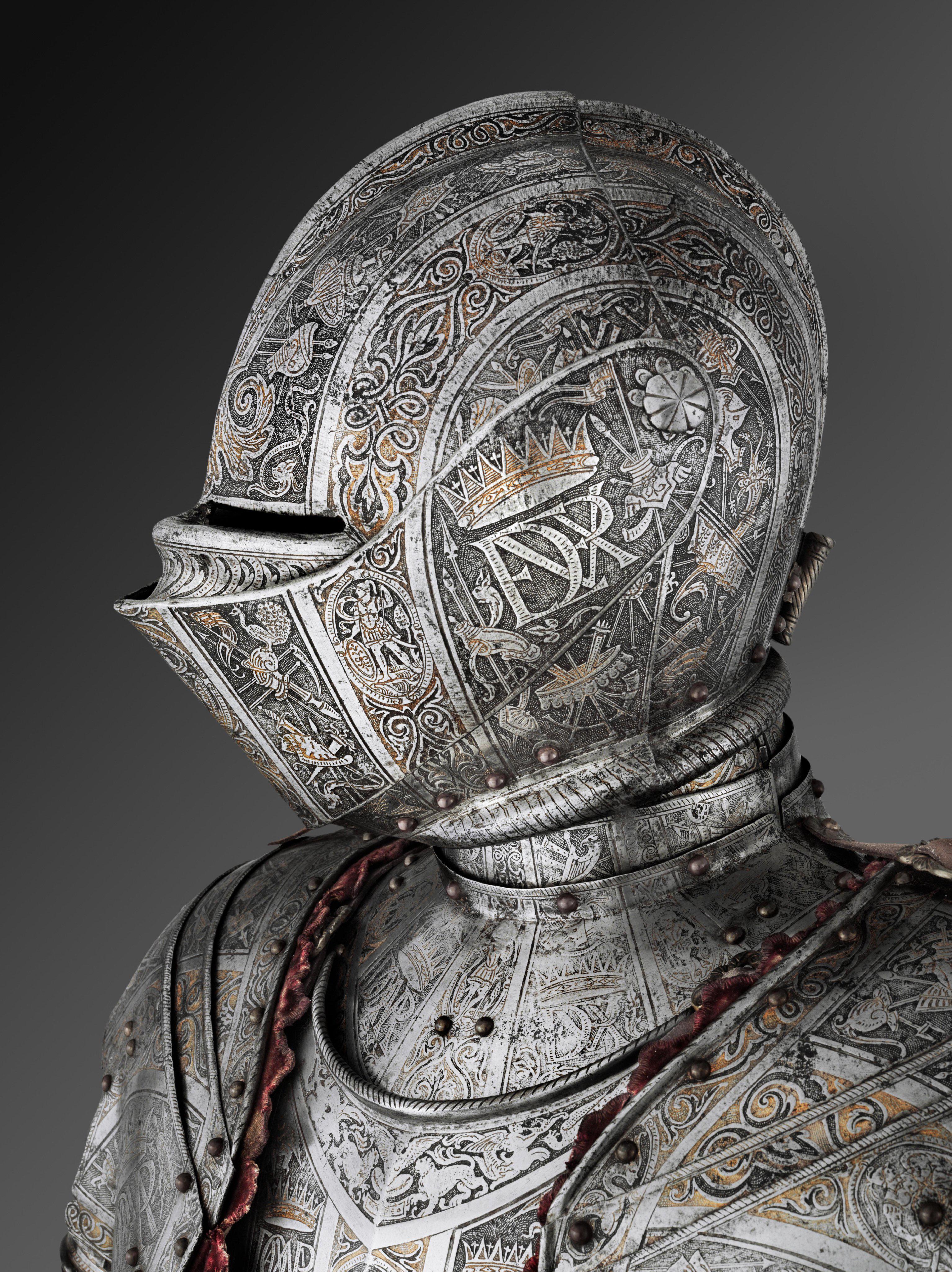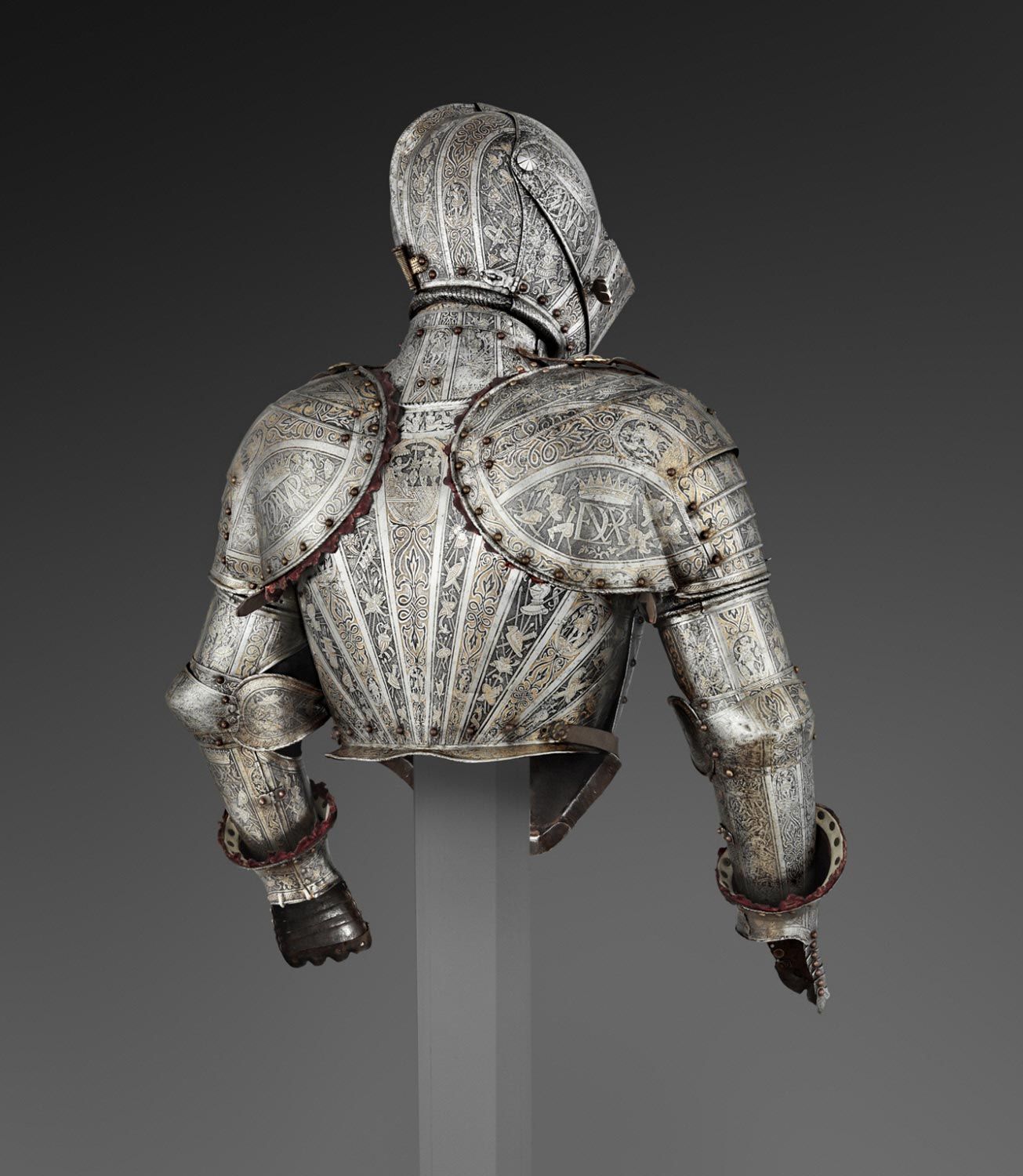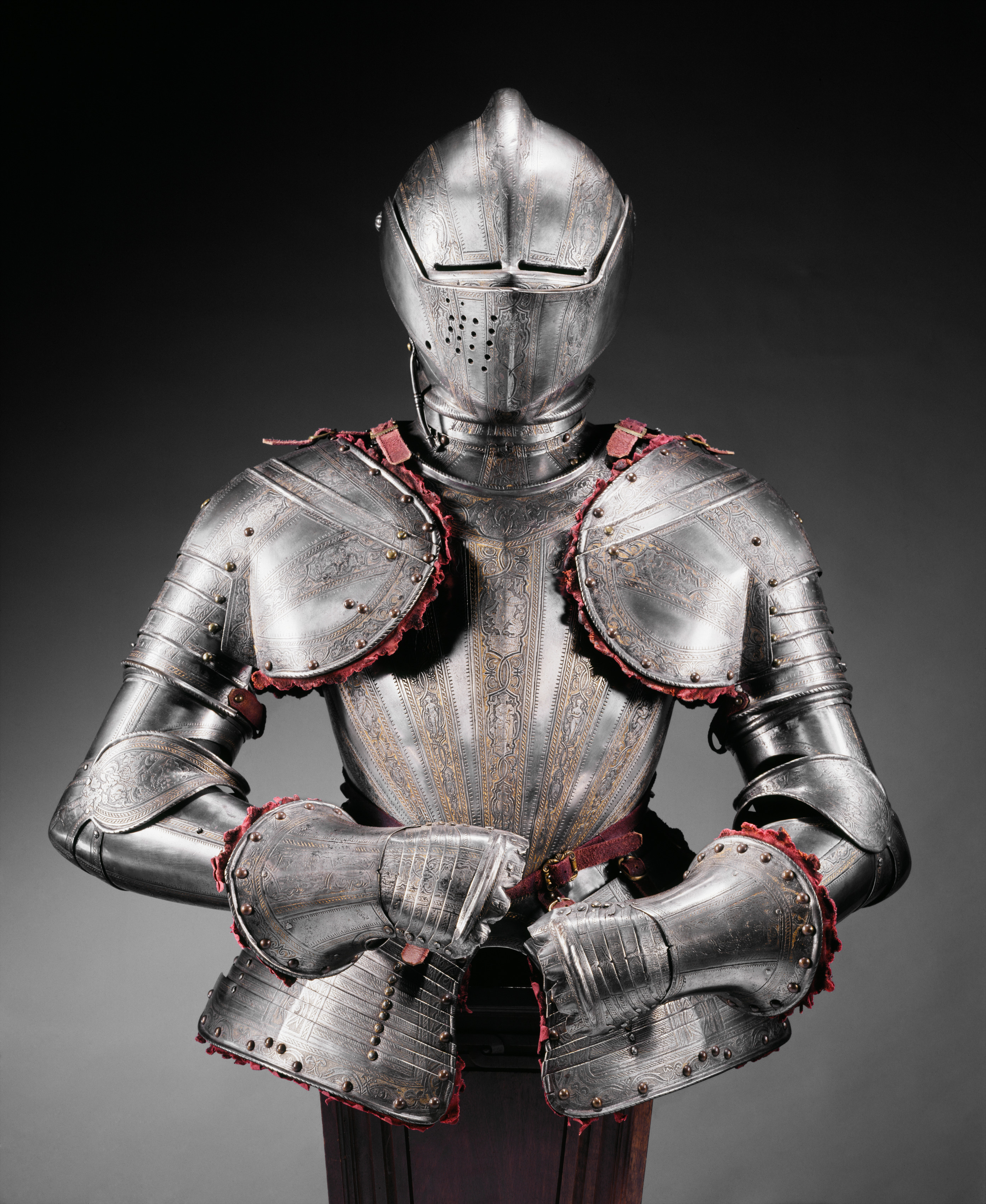Introduction
In the late 16th century, Italian craftsmanship flourished, blending artistry with practicality. One of the most striking examples of this is the armor created by Pompeo della Cesa between 1580 and 1590 CE. Now housed at the Philadelphia Museum of Art, this remarkable suit of armor reflects the technical ingenuity and aesthetic sophistication of the Renaissance era.

The Master Armorer: Pompeo della Cesa
Pompeo della Cesa was one of the most renowned armorers of his time, working in Milan—a city celebrated for its exceptional metalwork. His pieces were prized for their meticulous attention to detail, combining protection with ornamental beauty. Della Cesa’s designs were often commissioned by European aristocracy, showcasing their status and wealth through intricate decorations and gilded embellishments.

Features of the Armor
This particular suit of armor exemplifies the Renaissance ideal of merging functionality with elegance. Key features include:
Intricate Etching: The armor is adorned with elaborate etchings, including floral motifs and mythological imagery, demonstrating the artistic skills of della Cesa’s workshop.Gilded Accents: Gold embellishments highlight the intricate patterns, creating a regal appearance.
Practical Design: While ornate, the armor retains its primary purpose of providing mobility and protection, reflecting della Cesa’s mastery of balancing form and function.
Such designs were not merely for battle; they often served ceremonial purposes, symbolizing the wearer’s power and prestige.
Milan: The Hub of Armor Production
Milan was a leading center for armor production during the Renaissance. The city’s workshops, including that of Pompeo della Cesa, were renowned for their innovations in metallurgy and design. Armor from this region was not only durable but also considered a luxury item, representing the pinnacle of European craftsmanship.

Legacy and Significance
The preservation of this armor in the Philadelphia Museum of Art offers a unique window into the cultural and artistic achievements of the Renaissance. It stands as a testament to the fusion of art and utility, showcasing how Italian armorers elevated their craft to an art form.
For modern audiences, this suit provides a tangible connection to the values and aesthetics of 16th-century Europe. It reminds us of a time when even instruments of war could embody extraordinary beauty and creativity.
Conclusion
The armor crafted by Pompeo della Cesa is more than just a relic; it is a masterpiece of Renaissance innovation and artistry. Its intricate design and historical significance make it an enduring symbol of the era’s craftsmanship, offering a glimpse into the lives of those who wore such extraordinary creations.

